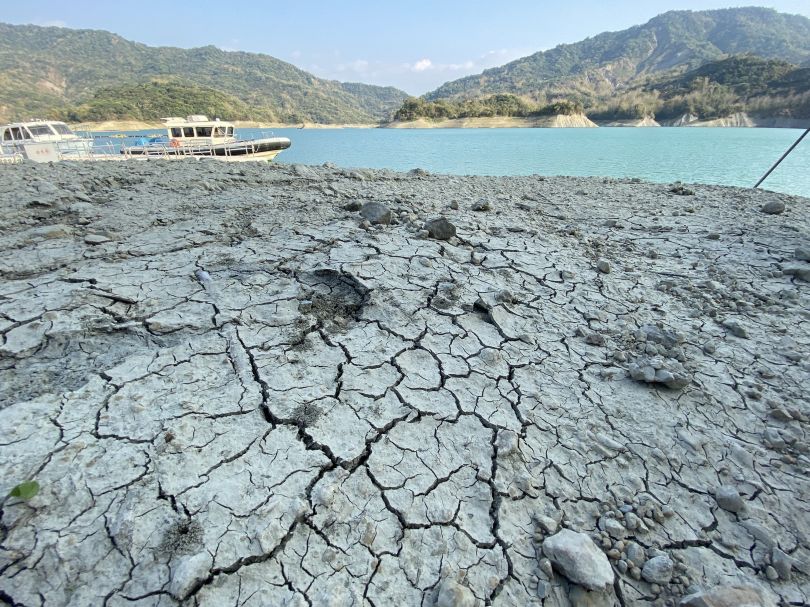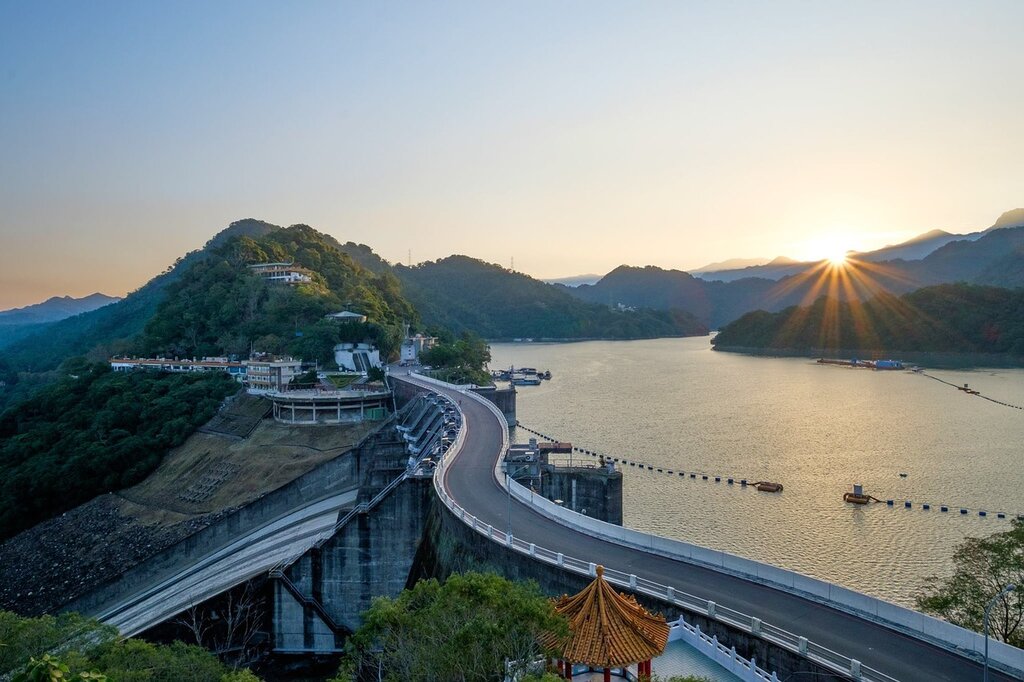The water shortage in Taiwan in 2021 revealed the vulnerabilities of its water resource management and overconsumption due to notoriously low prices. Water is also a key component in two of the island’s biggest economic drivers: the semiconductor and agricultural industries. As the impacts of climate change will likely bring less rainfall and typhoons to the region, Taiwan needs to find a way to address its water consumption or risk long-term water shortage and deep financial impacts.
—
Sitting in the junction of the East and South China Seas in the northwestern Pacific Ocean, Taiwan has been historically one of the wettest places in the world where an average of 3-4 typhoons make landfall on the island every year. Monsoons are also common in the region, where rainwater is so abundant that it is enough to meet its industrial and agricultural needs. Indeed, typhoon events alone meet about half of Taiwan’s annual water needs.
However in 2021, no single typhoon arrived in Taiwan for the first time since 1964, coupled with limited rainfall that year, resulted in its worst drought in more than half a century. 17 of the island’s 19 major reservoirs were at less than 50% capacity during the historic month-long drought, with a few at risk of draining completely, including the Baoshan No. 2 Reservoir in Hsinchu County where water levels dropped as low at 7% full and the Techi Reservoir in which water levels plummeted down to 4.4% capacity.
The subsequent water shortage in Taiwan forced officials to restrict domestic water supply for its residents and businesses, including Taichung, one of Taiwan’s biggest municipalities, for two days a week. The extreme dry spell also worsened electricity management, which contributed to two large-scale electricity blackouts in less than one week.
The agricultural sector in particular was severely hit hard by the 2021 drought. Water rationing rules forced thousands of crop planters across the island to leave land fallow while irrigation stalled across more than 74,000 hectares of farmland, a size equivalent to the city of New York. The government compensated farmers for it, but the brief termination of agricultural activities impacted their brand and risked losing clientele.
One of the biggest industries that was heavily impacted by the drought and diminishing rainfall is its semiconductor sector, which is responsible for 90% of the world’s most advanced computer chips and a massive chunk of Taiwan‘s overall economy. Significant amounts of water is needed to clean the wafers that go into many tech devices. Much of the water ration was redirected from resident consumption and agriculture to keep the lucrative semiconductor industry afloat and moving.
While Taiwan’s reservoirs eventually refilled, ending the unprecedented month-long drought, climate scientists have warned in the UN-backed The Intergovernmental Panel on Climate Change (IPCC) report that climate change is affecting typhoon pathways in the Pacific, potentially bringing less typhoons and rainfall to Taiwan – while many countries in the Global South like Pakistan will likely experience more severe storms and flooding. The looming trend therefore increases the risk of water scarcity and threatens its industries that rely so heavily on water.
“What seems to be happening in Taiwan is the severity of drought is increasing,” said Nneka Chike-obi, a director of sustainable finance at Fitch Ratings. “It’s not just that they are getting less rain, it’s that they are incredibly dry for longer periods of time, so they are now in a situation where they have to look at solutions like those in countries that have traditionally had issues with water supply.”
In the worst case scenario should all the major reservoirs dry up, it could have detrimental consequences for the global electronics sector. Already, the number of annual rainy days in Taiwan has fallen by about 50 since the 1960s.
You might also like: Causes and Effects of Water Shortage

Despite the severe drought in 2021, Taiwan has yet to make long-term plans to prepare and adapt to the growing water shortage issue. To deal with droughts, the government had been drawing water from wells and seawater desalination plants, flying planes and burning chemicals to seed clouds above reservoirs.
But Taiwan has a massive underlying water consumption problem. Taiwanese residents have a tendency to take water for granted, largely attributed to the fact that water prices are jaw-droppingly low. At NT$11 (USD$0.39) a ton, water rates in Taiwan are among the lowest in the world, costing four times lower than that of the US and six times lower than in the UK.
Low water costs therefore offer little incentive for people to conserve and manage their water usage. In Taichung, the daily rate of domestic consumption per person is 283 litres, according to government data from 2019. In Taipei, Taiwan’s capital, water consumption goes up to 332 litres per day. To compare, the average residential water consumption in Europe is about 144 litres per person per day and 310 litres in the United States – which has ten times the population of Taiwan.
Raising prices would be politically sensitive as politicians will likely lose votes should the topic even be raised. According to a spokesperson for the Water Resources Agency, the government has made no plans to do so either. Likewise, building new dams would be politically unpopular considering their environmental damage.
Poor water management is another contributing factor to Taiwan’s water shortage risk. Water pipe leakage cost the island nearly 14% of its water. Deforestation has also led to soil runoff during precipitation, leading to sediment build-up in reservoirs. This in turn reduces reservoirs’ capacity to collect more water during rainy periods for use in dryer or drought conditions.
Though the government has been working to combat these problems. Nation-wide pipe leakage rate today has dropped from 20% a decade ago, while greater efforts have been made to build more seawater desalination plants – utilising the island’s surrounding waters. For example, a new facility has been built in Hsinchu but it can only treat 13,000 tons of water a day. That barely makes a dent in contributing to the water that is needed in the semiconductor industry, which consumes about 20% of Taiwan’s water. For instance, the Hsinchu Science Park alone where many semiconductor makers are based consumes 170,000 tons used each day. Far more desalination plants are required, especially if Taiwan does not increase its current water prices.
Changes in water usage in the agricultural sector will be crucial too in mitigating the potential risks of water shortage in Taiwan. Currently, more than two-thirds of the island’s water goes towards agriculture. A large portion of which is dedicated to the twice-yearly cultivation of rice in flooded fields and tropical fruit. Farmers need to adopt more efficient and sustainable methods such as precision irrigation to reduce water use. But as the sector is dominated by small-holders farmers whose average age was 62 in 2015, it could prove to be a challenge in making the transition.
The Taiwanese government is also considering paying farmers to switch one of their rice harvests to a less water-intensive crop, as well as investing in more wastewater reclamation plants and digging more deep water wells.
But these solutions fail to address the root of the problem, which is Taiwan’s excessive water consumption. Officials and politicians fear the political fall out if they introduce any plans to raise water prices. But should there be another severe drought – which is very likely according to climate projections – the government will once again be forced to divert water towards the microchip industry, risking an even bigger pushback from its Taiwanese residents and the agriculture industry.
You might also like: Water Shortage in Scotland: How the Famously Wet Country Became Water Scarce


















